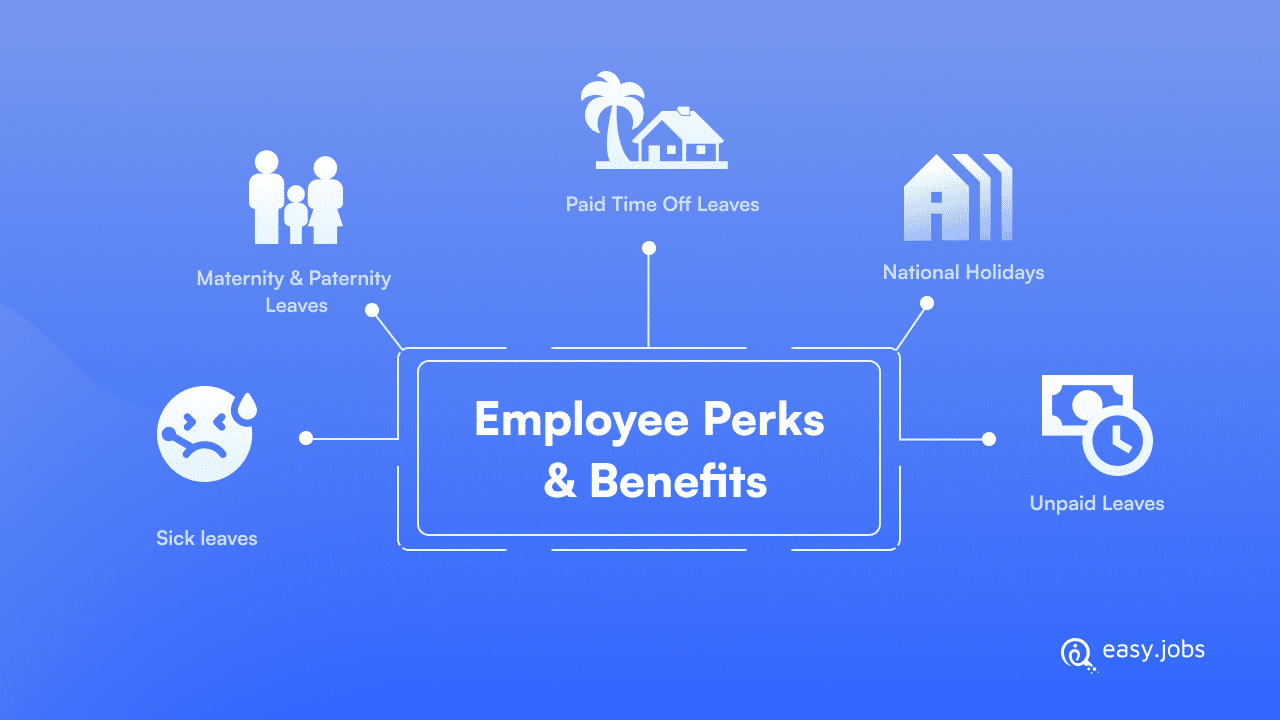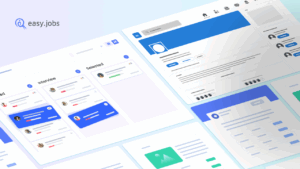One of the most powerful ways to demonstrate a commitment to inclusivity in the workplace is by carefully curating the perks and benefits that cater to the diverse needs and lives of employees. By offering a comprehensive range of leave options, companies can create an environment where every employee feels valued, supported, and empowered to balance their personal and professional lives seamlessly.
In this blog, you will get a carefully curated list of 5 kinds of leave types you must include in the perks and benefits packages to cultivate an inclusive culture that prioritizes the well-being of every team member. Interested to learn more? Let’s take a deep dive below!

5 Kinds Of Leaves You Must Include In The Workplace Perks & Benefits Package
After careful research, we have listed all 5 kinds of leaves and detailed information about these holiday types below. Including these leaves in perks & benefits packages can surely help you advance your office culture and bring more satisfaction to employees.
Sick Leaves (Documented & Otherwise):
Employees who are unable to work due to illness or injury are granted sick leaves, sometimes referred to as medical leaves or health-related leaves. These leave periods, which are frequently paid, are intended to provide workers time to heal without worrying about losing money. Employers frequently want a doctor’s letter or other kind of medical documentation to support the need for sick time (usually falls under the documented sick leave type). However, undocumented sick leaves should also be allowed for unexpected occurrences that might happen to any employee at any time.
Maternity & Paternity Leave:
Paternity leave is given to new fathers to help their spouses and form bonds with their children, whereas maternity leave is given to expectant mothers before their child is born, so they have enough time to prepare to give birth, recover afterward, and also attend to their newborn child’s needs. The length of these leaves, which can be paid or unpaid, varies according to the employer and country’s rules. Regardless of where your workplace may be situated, and regardless of the type of employment you arrange, you need to include these leaves in your office benefits.
Learn More – ⭐ Inclusion Metrics: The Complete Guide To Measuring Diversity In The Workplace
Paid Time Off Leaves:

A flexible leave policy known as paid time off (PTO) combines personal, sick, and vacation days into a single block of time off. This time can be used by employees for a variety of purposes without having to classify them separately.
“31% of employees and a negligible percentage of employers believe mandatory paid time off to be the most important benefit.”
(Forbes, 2023)
National Holidays:
Days set aside by a nation to honor important occasions or holidays are known as national holidays. Frequently, employers give their staff the day off to honor these holidays. Thanksgiving Day, Christmas Day, Independence Day, New Year’s Day, and other holidays are a few of the most celebrated paid national holidays.
Unpaid Leaves:
Employees who take time off from work without getting paid are said to be on unpaid leave. These absences are typically issued when an employee needs more time off than their allotted paid leave or in circumstances where paid leaves are not applicable.
Let’s say you have used up all of your leave as an employee, but a family emergency requires you to take an extra week off. In this instance, it will be seen as an unpaid leave request, and you won’t get paid for that time as usual. These could vary depending on the organization.
Now It’s Your Turn To Explore!
Understanding and managing these different kinds of leave is crucial for both employees and employers to maintain a healthy work-life balance and ensure a supportive and productive work environment.
It takes active participation from all levels of an organization to cultivate an inclusive culture; it is not only a box to be checked. Companies can make a huge step towards fostering a culture where everyone feels noticed, appreciated, and cared for by providing a complete package of leaves that takes into account the various conditions and requirements of employees.
The foundation of a comprehensive benefits strategy that takes into account the diverse lives of employees is made up of the 5 kinds of leave that were discussed: sick leaves, maternity and paternity leave, paid time off, national holidays, and unpaid leaves.

Let’s keep in mind that encouraging diversity through perks and incentives is more than simply a company policy; it shows a company’s sincere dedication to its employees’ welfare as can go forward in the modern workplace. By putting your employees first, you will be able to foster a culture where everyone can succeed, regardless of their background or situation.
Hopefully, these 5 kinds of leave that you must include your perks and benefits seem interactive. If you want a more exciting blog like this, check out our blog page and let us know your experience by commenting below. Or you can even join our friendly Facebook community and get attached.





